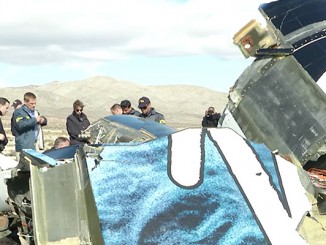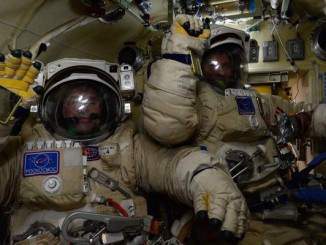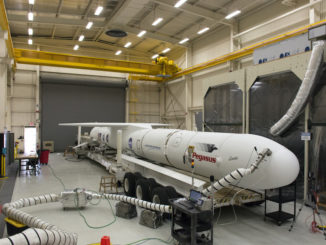
A decade in the making, NASA and SpaceX have set May 27 as the target launch date for the first crewed space mission to launch into orbit from U.S. soil since the retirement of the space shuttle in 2011.
NASA astronauts Doug Hurley and Bob Behnken, two veterans of the shuttle program, will ride SpaceX’s Crew Dragon spacecraft into orbit on top of a Falcon 9 rocket from pad 39A at NASA’s Kennedy Space Center in Florida. That’s the same historic launch facility used by the last space shuttle flight.
Liftoff time on May 27 is expected to be around 4:32 p.m. EDT (2032 GMT), when the Earth’s rotation brings the launch pad under the orbital plane of the International Space Station.
“Once in orbit, the crew and SpaceX mission control will verify the spacecraft is performing as intended by testing the environmental control system, the displays and control system and the maneuvering thrusters, among other things,” NASA said in an update Friday.
The Crew Dragon will fire its Draco thrusters to rendezvous and dock with the space station the day after launch.
“The spacecraft is designed to do this autonomously but astronauts aboard the spacecraft and the station will be diligently monitoring approach and docking and can take control of the spacecraft if necessary,” NASA said.
Assuming a launch May 27, Crew Dragon will dock with the space station at 11:29 a.m. EDT (1529 GMT) on May 28, NASA says.
BREAKING: On May 27, @NASA will once again launch American astronauts on American rockets from American soil! With our @SpaceX partners, @Astro_Doug and @AstroBehnken will launch to the @Space_Station on the #CrewDragon spacecraft atop a Falcon 9 rocket. Let’s #LaunchAmerica 🇺🇸 pic.twitter.com/RINb3mfRWI
— Jim Bridenstine (@JimBridenstine) April 17, 2020
Hurley and Behnken are training for the test flight, designated Demo-2, and are expected to live and work on the space station for several months. They will undock and return to Earth for a parachute-assisted splashdown in the Atlantic Ocean east of Florida.
The Demo-2 flight with astronauts caps a decade-long effort to design, develop and qualify the Crew Dragon spacecraft for piloted missions. SpaceX successfully flew a Crew Dragon capsule without astronauts to the space station in March 2019 and returned the ship to Earth.
SpaceX has also completed two major tests of the Crew Dragon’s launch escape system, which would be used to push the capsule away from its Falcon 9 rocket during fueling on the launch pad, or in flight.
Last week, NASA Administrator Jim Bridenstine said he was “fairly confident” the Crew Dragon could be ready to carry astronauts to the space station at the end of May or in early June.
In an interview with Spaceflight Now last week, Bridenstine cited several focus areas as SpaceX and NASA march toward launch of the Demo-2 test flight. They included completing two final parachute tests, data reviews, and ensuring the astronauts and ground teams remain healthy during the global coronavirus pandemic.
One of the two remaining parachute tests was successfully completed last weekend after dropping a test rig from a C-130 cargo plane. SpaceX changed the testing plan after a helicopter drop test in March was cut short when the test rig became unstable, forcing the pilot to prematurely release the device that simulates the mass of the Crew Dragon spacecraft.
The problem was not related to the parachutes themselves, and chute testing have successfully resumed, NASA officials said.
One more parachute drop test from the C-130 cargo plane is scheduled for early May. That will be the final planned parachute test before the Demo-2 launch.
As of Friday, SpaceX said it has completed 26 tests of the Crew Dragon’s “Mark 3” parachute design, including 13 single parachute tests, 12 multi-chute drops, and an integrated test of the entire parachute recovery system on the Crew Dragon’s in-flight launch abort test in January.
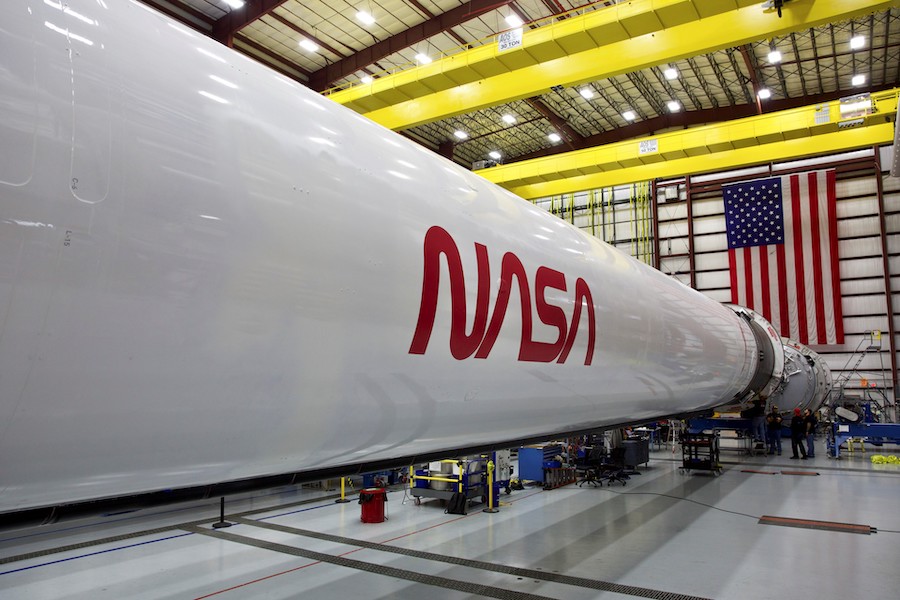
An investigation into an engine failure on the most recent launch of SpaceX’s Falcon 9 rocket — the same design that will launch the Crew Dragon astronauts — was also expected to be completed in short order, Bridenstine said last week.
“I think we’re really good shape,” Bridenstine told Spaceflight Now last week. “I’m fairly confident that we can launch at the end of May. If we do slip, it’ll probably be into June. It won’t be much.”
Preparations for the Demo-2 launch are continuing during the coronavirus pandemic. NASA has determined the crewed mission is essential, and the astronauts, their training teams and SpaceX’s spacecraft and rocket technicians remain at work.
Other officials, such as managers and some engineers, are working remotely.
SpaceX and Boeing won multibillion-dollar NASA commercial crew contracts to develop human-rated spaceships in 2014, following several years of preliminary development and testing. SpaceX is ahead of Boeing, and the crew capsule for the upcoming test flight — designated Demo-2 — is currently at Cape Canaveral undergoing pre-launch processing and testing.
Through the agency’s Commercial Crew Program, NASA is paying SpaceX more than $3.1 billion for Crew Dragon development and six operational crew rotation flights to the space station following the Demo-2 mission.
SpaceX’s Crew Dragon and Boeing’s Starliner capsule will give NASA a U.S.-built ship to ferry crews to and from the station, ending the space agency’s reliance on Russian Soyuz spacecraft for crew transportation.
SpaceX is set to be the first commercial company to launch astronauts into orbit after Boeing ran into trouble on the first unpiloted test flight of its CST-100 Starliner capsule in December.
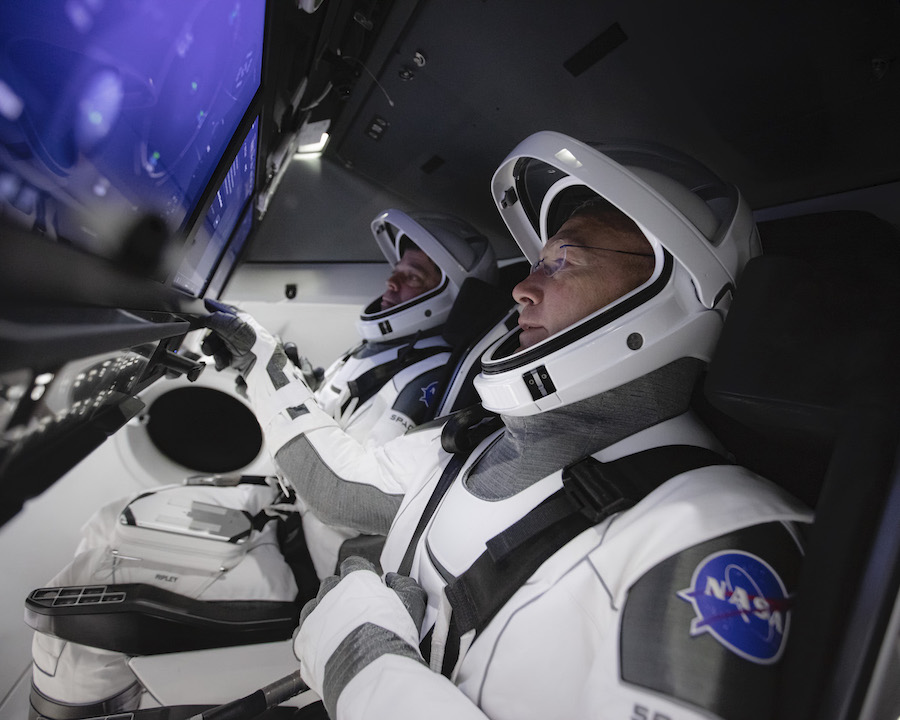
Behnken, 49, will be the “joint operations commander” for the Demo-2 mission, responsible for activities such as rendezvous, docking and undocking, according to NASA. He will also be responsible for mission activities while at the space station.
Hurley, 53, will be the “spacecraft commander,” responsible for launch, landing and recovery.
Both were selected to join NASA’s astronaut corps in 2000, and they have each flown on two space shuttle flights. Hurley was the pilot of the space shuttle Atlantis on the shuttle program’s final mission in July 2011.
In recent months, Hurley and Behnken have been training for an extended stay on the space station. The Demo-2 mission was originally slated to last just a couple of weeks, with the crew’s focus on testing the Crew Dragon spacecraft before future station crews ride it to and from the space station on operational flights.
Hurley has been training to operate the space station’s Canadian-built robotic arm. Behnken has been practicing spacewalk procedures in case he is needed to go outside the station for repairs or maintenance tasks.
“We’re trying to keep our focus on the technical matters, the operational matters, and we’re trying to get the vehicle ready to go so that when we fly it, everything goes the way it’s supposed to,” Hurley told reporters in January. “The critical part is certifying the (Crew Dragon) vehicle for future crews… making it a great vehicle for those guys.”
“We’ll be ready when they pick the date,” Behnken said. “All the things that have to be ready, we’re just part of those things and we’ll just try really hard not to be the long pole.
Most of the Crew Dragon mission will be automated, but the astronauts will have the ability to command a manual launch abort with a handle on the ship’s cockpit control console. They also have the ability to manually fly the spacecraft.
“Our plan is to do some manual flying, in what we call the far-field,” Hurley said in January. “And then closer to ISS, the normal plan is to do an automated docking. Ideally, it would be nice to test that capability, but I think we can get some really good data from flying a little farther away on the docking axis with the vehicle. That is at least the plan going in, and there are some constraints with fuel and those kind of things.”
Bridenstine said last week that the second Crew Dragon mission with astronauts, which will fly with a four-person crew, could launch in August or September, pending the outcome of the Demo-2 mission. On regular crew rotation flights, the Crew Dragon will be certified to remain docked at the space station as a lifeboat and return vehicle for up to 210 days.
The Crew Dragon spacecraft flying on the Demo-2 mission will be able to stay at the space station for about 110 days, according to NASA. The exact duration of Hurley and Behnken’s mission will be determined based on the readiness of the next commercial crew launch, officials said.
Assuming the next Crew Dragon is ready for launch in August or September, Bridenstine said the Demo-2 mission will last around two or three months.
Email the author.
Follow Stephen Clark on Twitter: @StephenClark1.

